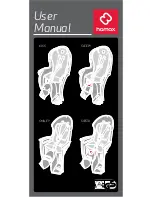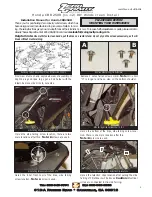
024-55120
2
3.
Measure output lead of original regulator. Cut output lead on Compu-
Fire Regulator to same length. Strip wire and crimp #10 insulated ring
terminal to wire. NOTE: Crimp must be tight for reliable charging.
4. Install Compu-Fire Voltage Regulator using original hardware.
NOTE:
Regulator
must be mounted in are with good air flow.
NOTE: COMPU-FIRE REGULATOR GROUND WIRE MUST BE CONNECTED TO
SOLID ENGINE GROUND FOR CORRECT OPERATION.
5. Locate suitable engine grounding point. Select proper size uninsulated ring
terminal from hardware kit.
NOTE:
Crimp must be tight for reliable charging.
6. Plug in connector to stator.
NOTE:
Stator connector must plug in tightly for
proper charging operation.
7.
Connect output terminal to the
AUX (silver) terminal on the 30
Amp main circuit breaker.
8. Connect battery ground cable.
TROUBLE SHOOTING
Stator
1. The stator has 2 Pins, the pins should have
continuity to each other, but the pins should
NOT
have continuity to ground.
2. With a volt meter on AC volts, the stator should
be putting out 14 volts per 1,000 RPM.
(Check at 1,000 and 3,000 RPM)
3. If all this test out properly your installation of the
stator was successful.
Regulator
1. Do not use test procedure found in the
factory shop manual. The Compu-Fire voltage
regulator uses high efficiency series circuitry.
The electronic circuitry is completely different.
2. With the main switch OFF, measure the
voltage from the regulator output terminal (AUX
silver terminal) to ground. The reading should
be 12 - 13 volts. If there is no voltage reading,
the battery is disconnected.
3. Start the engine and bring the RPM to 1500.
The voltage should rise 1/2 to 1 volt. This
indicates that the voltage regulator is charging.
This completes the test.





















